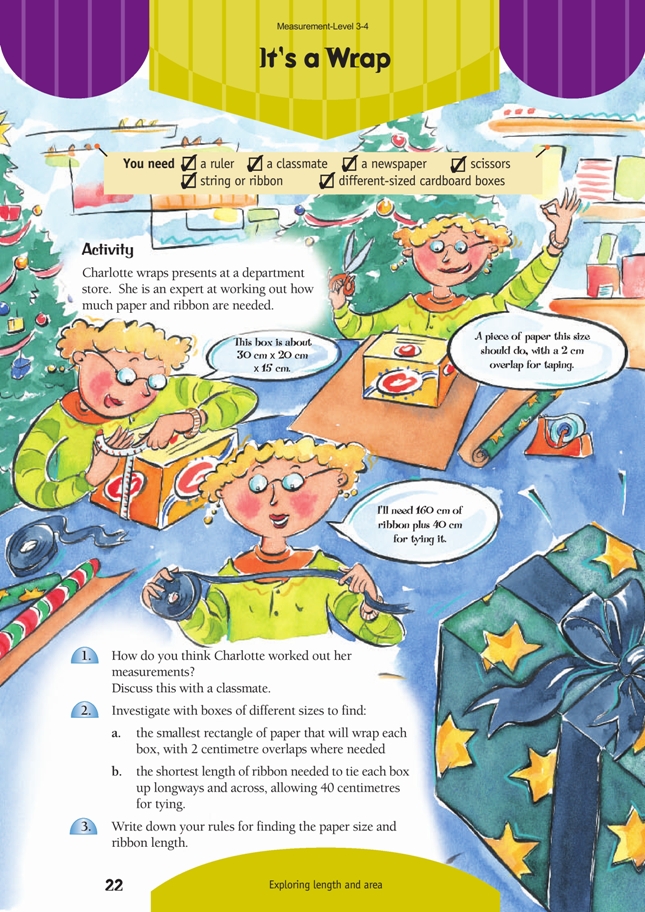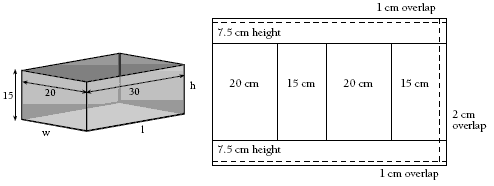This is a level 4 measurement activity from the Figure it Out series.
A PDF of the student activity is included.
Click on the image to enlarge it. Click again to close. Download PDF (499 KB)
investigate areas and perimeters of cuboids
a newspaper
different-sized cardboard boxes
FIO, Level 3-4, Measurement, It's a Wrap, page 22
classmate
Before the students begin question 1, they could wrap up a box with newspaper so they understand how the paper wraps around the box, especially around the ends, and how much paper is needed.
A common mistake is to assume that the width of the piece of paper is the length of the box plus two times the height of the box. If the students make this mistake, point out that the paper needs to cover the length of the box and then go only halfway up the height of the box. The other half of the box height will be covered when the paper wraps around the box and folds down. The students could model this to check.
Another potential source of confusion is that the long side of the box, or the length of the box, is used to work out the width of the piece of paper. This is because the length of the paper has to cover the width of the box twice and the height of the box twice. This will usually be longer than the box’s length.
In question 3, the students can express the rules in words or symbols or in any other way as long as the rule is equivalent to the answer shown. After they have a correct rule, you may wish to show them some efficient ways to use symbols to express their rules. For example, using P for paper and B for box: Pw = Bw + Bh + 2 cm and Pl = 2(Bh + Bw) + 2 cm. Note that the paper length rule can be expressed as Pl = 2Bh + 2Bd + 2, which can be compressed as P1 = 2(Bh + Bd + 1), using the common factor rule.
Answers to Activity
1. To get the width of the piece of paper, she took the width of the box, added the height, and then added 2 cm for overlap. To get the length of the piece of
paper, she multiplied the depth by 2, added that to the height multiplied by 2, and added 2 cm overlap. For the tape length, she went: (2 x 30 cm) + (2 x 20 cm) + (4 x 15 cm) + 40 cm for tying.
2. Answers will vary. Teacher to check
3. Rules could be expressed as:
paper width = box width + box height + 2 cm
paper length = (box depth x 2) + (box height x 2) + 2 cm
tape length = (2 x box length) + (2 x box width) + (4 x box height) + 40 cm.

